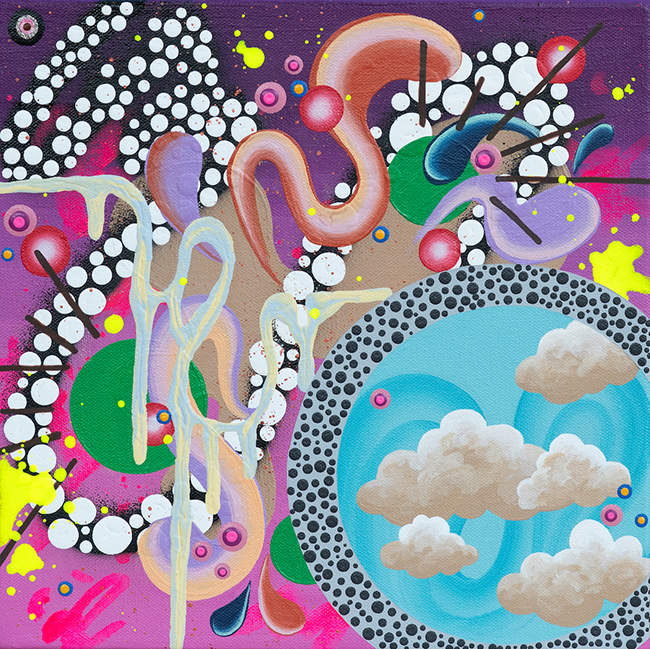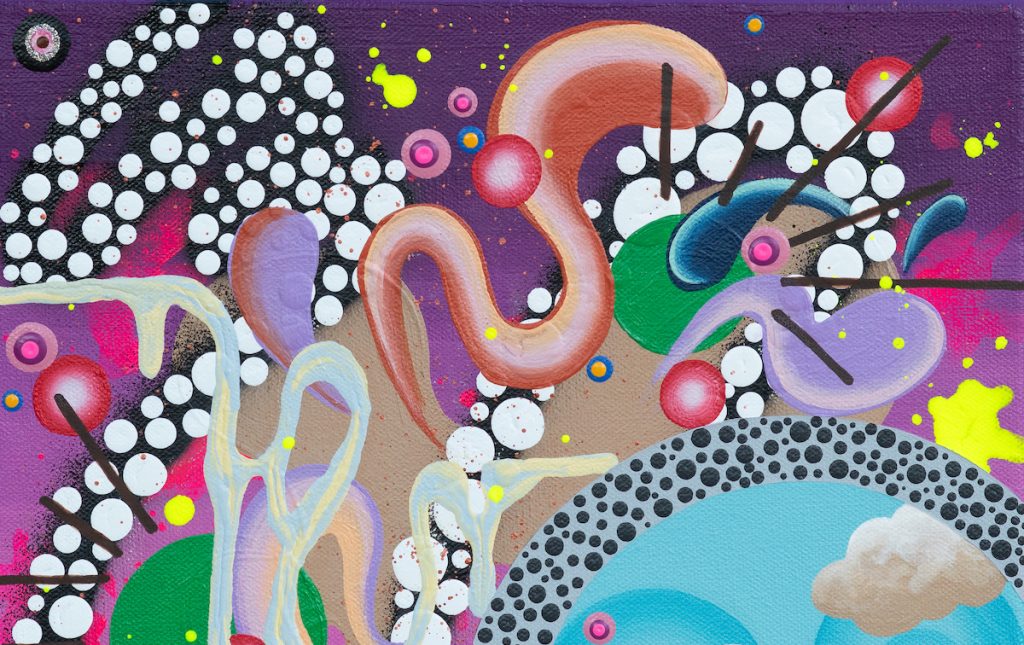Hailey Gearo, a 31-year-old multimedia abstract expressionist painter originally from Omaha, Nebraska, has been creating art since she could first hold a brush. Her work is less about objects and more about feelings—moments suspended in color, movement, and texture. Glitter sometimes slips into her canvases, not as decoration but as punctuation, catching light the way memory or intuition might. She paints dreamscapes, mapping the inner landscape of her own story, crafting what she calls her “personal lore.” This is less a diary than a way forward, using abstraction to reach deeper into self-understanding.

Her practice is recognized for its erratic gestures and vibrant color fields, which have found homes in diverse public and private spaces. Hailey’s paintings have been displayed at The Cathedral, The Carver Museum, Riches Gallery, 2324 Studios, and even in the San Antonio Airport, where travelers pause before her canvases like windows into another atmosphere. Each space she enters expands the reach of her explorations, while her work continues to circle back to one central impulse: how to transform inner chaos into something tangible, vivid, and alive.
The Work: Nutz (2024)
Hailey’s 2024 painting Nutz is a compact piece—just 12 x 12 inches—yet it carries a weight disproportionate to its size. She uses acrylic paint, acrylic pen, spray paint, and glitter on canvas. The surface is restless, layered, almost anxious. At first glance, it feels playful with its glitter, but as you look closer, you sense turbulence beneath the shimmer.
The painting circles a question Hailey has wrestled with for years: the link between mental illness and creation. She has noticed the pattern not only in famous artists of the past but also in peers around her, and in her own life. Where some artists might romanticize this tension, Hailey faces it head-on. Nutz is not an attempt to escape pain but to sit with it, to map it out in paint, to make it visible.
In her own words, she refuses to suffer in silence. Instead, she explores “all the nuances of my fractured psyche.” The word fractured suggests pieces, shards, things broken—but on the canvas, those shards become movement, pattern, texture. There is something erratic, yes, but also something deliberate in how she channels it. The painting becomes less about the fracture itself and more about the act of harnessing it.
Process and Gesture
Hailey paints with movement as much as with pigment. Her erratic gestures aren’t accidents; they are the physical traces of her attempt to wrestle with fear and sorrow. In Nutz, the marks echo back and forth between sharpness and blur, control and release. Spray paint drifts across the canvas like fleeting thoughts, while acrylic pen draws sudden clarity, like a phrase repeated in the mind until it carves itself into permanence.
The addition of glitter complicates the story. Glitter has associations with childhood, with celebration, with sparkle. On her canvas, though, it works differently. It interrupts the heaviness, yes, but it also insists that beauty and pain can coexist. The shimmer doesn’t mask the turmoil; it amplifies it. It asks the viewer to consider how joy can come out of fracture, or how fracture can itself generate light.
Themes of Self and Survival
Nutz fits into Hailey’s larger body of work as a story of survival. By following fear instead of avoiding it, she reshapes her relationship with it. The canvas becomes a site of negotiation: she pours out sorrow, reframes it, and reclaims it. The act of painting becomes a way to process, to give shape to something that otherwise might remain invisible.
This resonates with her broader practice of dreamscape-making. Her canvases aren’t literal landscapes; they are emotional maps. Each painting traces a route through memory, trauma, or fleeting moments of joy. By sharing them, she invites others to witness what it means to build understanding out of disarray.
Occupying Space
Hailey’s paintings have traveled from galleries to airports, adapting to different contexts while holding onto the same essence. In a museum, her canvases invite contemplation. In an airport, they act like open passages, offering a sudden breath of color to travelers caught in transition. The size of Nutz makes it intimate, yet its emotional reach is broad. It’s a reminder that scale is not measured only in inches, but in how a painting unsettles or steadies whoever stands before it.
Conclusion
At 31, Hailey Gearo continues to create work that refuses to simplify the tension between inner fracture and outer expression. Nutz is a compact but vivid demonstration of her commitment to honesty in artmaking. It is messy, luminous, fractured, and alive all at once. In embracing both the chaos and the shimmer, she offers a way forward: not silence, but storytelling; not concealment, but color; not avoidance, but the courage to follow fear until it becomes something worth seeing.

